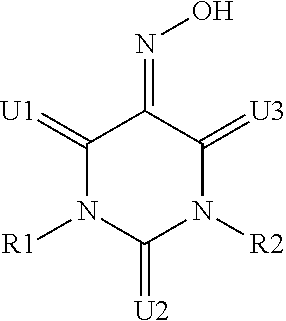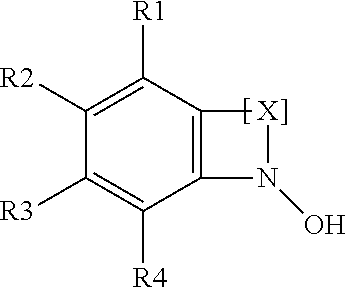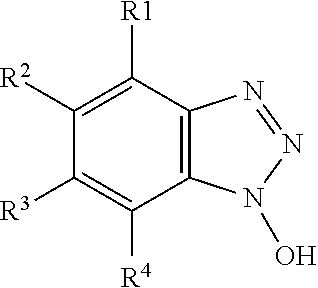Method of cleaning
a cleaning method and technology of a detergent mixture, applied in the field of cleaning, can solve the problems that bleaching containing coloured and white fabrics cannot always be used, and the colour deterioration of coloured fabrics, so as to achieve better cleaning and alter the optical properties of the molecul
- Summary
- Abstract
- Description
- Claims
- Application Information
AI Technical Summary
Benefits of technology
Problems solved by technology
Method used
Image
Examples
example 1
[0166]Immobilization of an oxidoreductase enzyme onto a solid substrate is done using EDC (N-(3-Dimethylaminopropyl)-N′ethylcarbodiimide) as described by Fischer MJ (Methods Mol Biol. 2010, 627:55-73). The activity of the immobilized oxidoreductase enzyme sample is confirmed by adding 600 μl of syringaldazine onto 250 ml of a liquid detergent solution. 0.06 ppm of immobilized oxidoreductase enzyme is added to the solution and absorbance at 531 nm is measured over a certain period of time. The starting colour of the solution is colourless / yellow with the end point being purple.
Time (min)Abs (nm)00.0580.50.06310.06820.07330.08140.08750.095100.126150.15200.164250.167
[0167]Cotton and polycotton fabrics including white and mixed coloured fabrics are washed together in a wash step comprising detergent composition 1. The wash water contains 13 litres water and from 30 to 60 g of detergent 1. The wash liquor also contains a sample of the immobilised enzyme described above.
[0168]The followin...
PUM
| Property | Measurement | Unit |
|---|---|---|
| particle size | aaaaa | aaaaa |
| diameter | aaaaa | aaaaa |
| diameter | aaaaa | aaaaa |
Abstract
Description
Claims
Application Information
 Login to View More
Login to View More - R&D
- Intellectual Property
- Life Sciences
- Materials
- Tech Scout
- Unparalleled Data Quality
- Higher Quality Content
- 60% Fewer Hallucinations
Browse by: Latest US Patents, China's latest patents, Technical Efficacy Thesaurus, Application Domain, Technology Topic, Popular Technical Reports.
© 2025 PatSnap. All rights reserved.Legal|Privacy policy|Modern Slavery Act Transparency Statement|Sitemap|About US| Contact US: help@patsnap.com



